AXIS#.SM.MODE
Description
AXIS#.SM.MODE defines the mode of service motion for each loop. Two types of service motion are available :
- A constant motion in one direction (endless or for a certain amount of time).
- An alternating motion.
The possible modes for this parameter are described in the following table:
|
AXIS#.SM.MODE |
Description |
Requirements |
|---|---|---|
|
0 |
Constant motion in closed current loop mode of operation.
The service motion can be stopped by using the AXIS#.STOP command. |
AXIS#.OPMODE = 0,1, or 2 AXIS#.CMDSOURCE = 0 |
|
1 |
|
AXIS#.OPMODE = 0, 1, or 2 AXIS#.CMDSOURCE = 0
|
| 2 | This mode executes the same service motion as mode 0. However, the motion is described by AXIS#.SM.I2, AXIS#.SM.T2 and AXIS#.SM.V2. This enables a change on the fly and is mostly used under fieldbus control. |
AXIS#.OPMODE = 0, 1, or 2 AXIS#.CMDSOURCE = 0 |
Profiles
Service Motion for AXIS#.SM.MODE 0 and AXIS#.OPMODE 0 (Current)
Profile when AXIS#.SM.T1 is greater than 0:
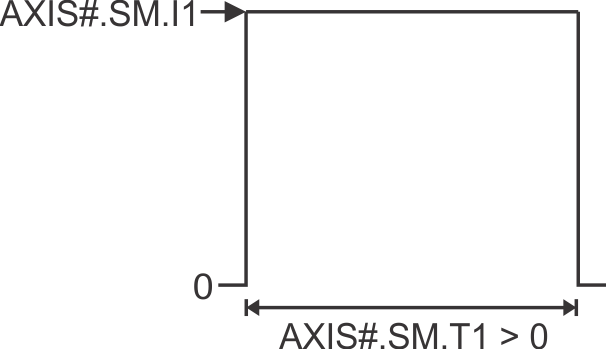
Profile when AXIS#.SM.T1 equals 0:
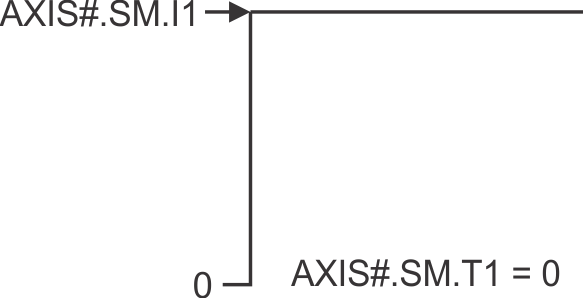
Service Motion for AXIS#.SM.MODE 0 and AXIS#.OPMODE 1 or 2 (Velocity or Position)
Profile when AXIS#.SM.T1 is greater than 0:
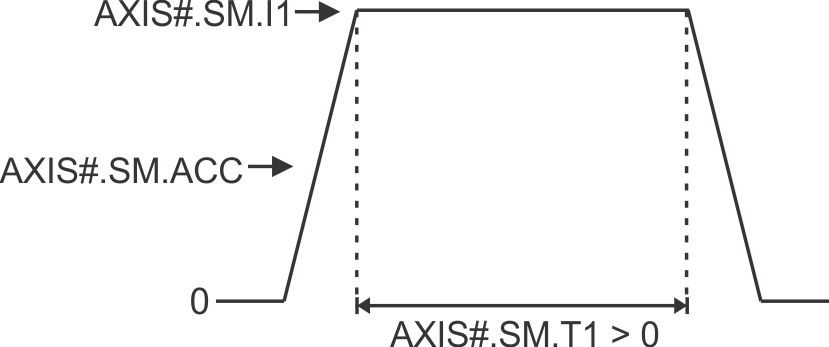
Profile when AXIS#.SM.T1 equals 0:
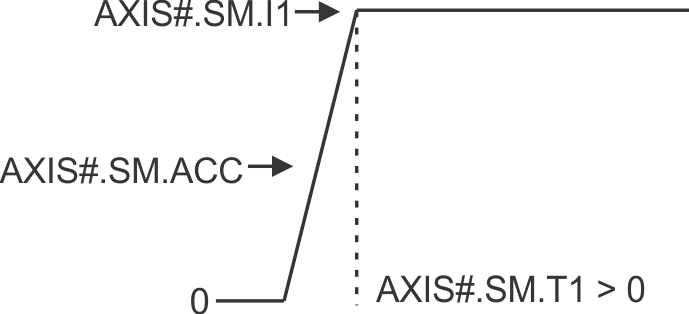
Service Motion for AXIS#.SM.MODE 1 and AXIS#.OPMODE 0 (Current)
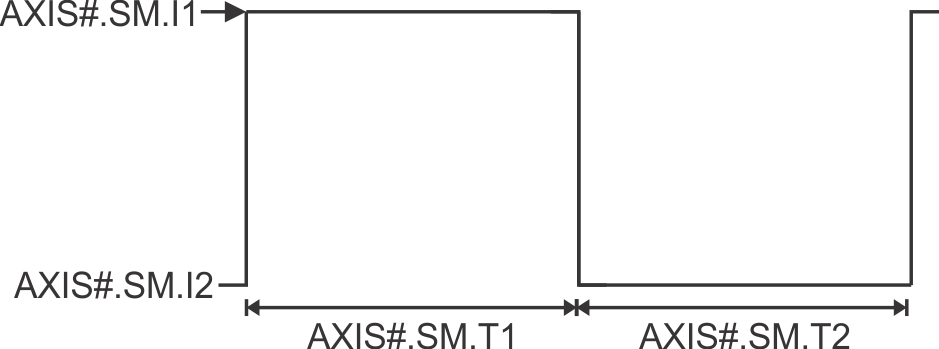
Service Motion for AXIS#.SM.MODE 1 and AXIS#.OPMODE 1 or 2 (Velocity or Position)

Versions
| Action | Version | Notes |
|---|---|---|
| Implemented | 02-00-00-000 |
General Information
|
Type |
Read/Write |
|
Units |
N/A |
|
Range |
0 to 2 |
|
Default Value |
0 |
|
Data Type |
Integer |
|
See Also |
|
|
Stored in Non Volatile Memory |
Yes |
Variants Supported
All variants are supported
Fieldbus Information
| Fieldbus |
Parameter | Index | Sub-Index | Data Type | Float Scale | Units | Access | PDO Mappable |
|---|---|---|---|---|---|---|---|---|
| EtherCAT |
AXIS1.SM.MODE | 0x500E | 0x3 | UINT | - | - | RW | False |
| AXIS2.SM.MODE | 0x510E | 0x3 | UINT | - | - | RW | False |






